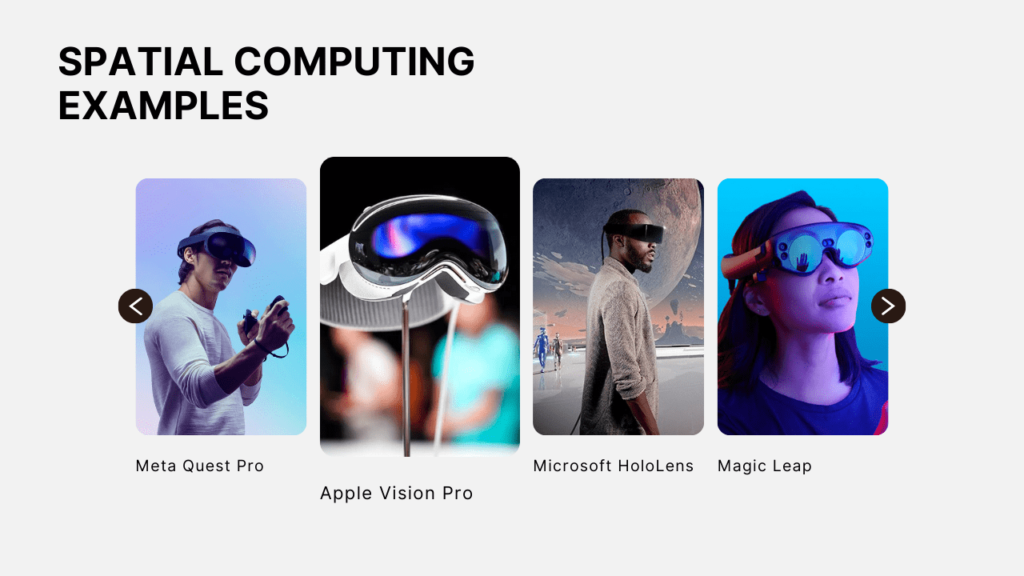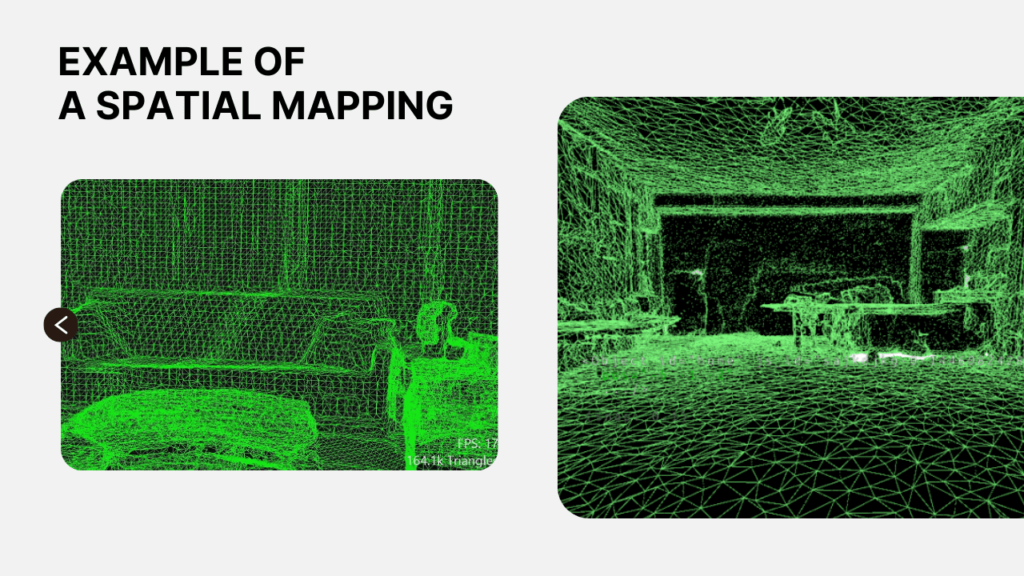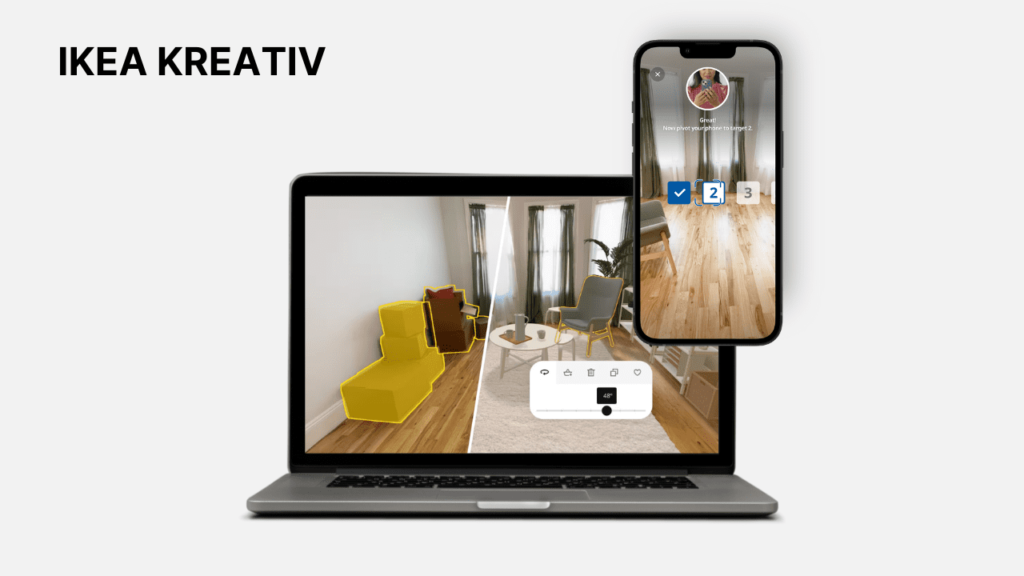Is the Future Here? How Spatial Computing is Revolutionizing Business Operations
Can you imagine a world where the lines between the physical and digital worlds blur? It appears that 2024 is precisely the moment when this will come to fruition.
Yes, we live in a world where technology continually pushes the boundaries of innovation, and it seems like spatial computing is a groundbreaking force as it promises to seamlessly intertwine the digital realm with our physical surroundings, which has never been done before. Picture a technology that not only augments our reality but does so while preserving our presence and connectivity with others. Impressive, right?
If you’re among the tech enthusiasts eagerly anticipating Apple Vision Pro’s arrival, then stay with us as we are going to discuss what are the basics of spatial computing, explore its advantages, real-world implications, and the imminent impact on business operations. Let’s go!
What is spatial computing?
So, who invented spatial computing, and what is an example of spatial thinking in everyday life?
Spatial computing, as a concept, doesn’t have a single inventor. It is an evolving field that has developed over time with contributions from various researchers, scientists, and innovators. According to Wikipedia, as a term, spatial computing was defined in 2003 by Simon Greenwold as “human interaction with a machine in which the machine retains and manipulates referents to real objects and spaces.” (Yale, June 1995.)
Now imagine you could virtually explore your dream vacation spot before booking it. With spatial computing, you can immerse yourself in a three-dimensional preview of the destination, getting a feel for the surroundings, attractions, and accommodations. Or, imagine you could test drive the car of your dreams without leaving your driveway. Spatial computing could allow you to experience the look and feel of different car models in your own space, helping you make the perfect choice.
At its core, spatial computing’s key feature is that it can seamlessly integrate the virtual and physical realms, offering an immersive experience that blurs the lines between the two.

Some of the notable spatial computing examples are devices such as Apple Vision Pro, Meta Quest Pro, Microsoft HoloLens, and Magic Leap. These advanced headsets allow users to view the real world while superimposing three-dimensional virtual objects into their surroundings.
What is the methodology of spatial computing?
In contrast to traditional computing, which operates in two dimensions, spatial computing integrates data, logic, and 3D-contextualized information to converge the physical and digital worlds more accurately.
For example, devices such as the Apple Vision Pro headset employ computer vision, using data from cameras and sensors to capture detailed visual information about the environment, including the position, orientation, and movement of objects.
These devices amalgamate data from various sensors like cameras and LiDARs through sensor fusion, providing a comprehensive and accurate perspective of the surroundings. Besides, spatial mapping generates a precise 3D environment model, facilitating accurate placement and manipulation of digital content.

Why is everyone so excited about Apple Vision Pro?
Last June, in Cupertino, California, Apple revealed the Apple Vision Pro, an innovative spatial computer that seamlessly integrates digital content with the physical world, maintaining user presence and connection. This groundbreaking device introduces an expansive canvas for applications, extending beyond the confines of traditional displays. The thing is that it incorporates a three-dimensional user interface controlled by natural inputs like eyes, hands, and voice.
With the introduction of visionOS, the world’s first spatial operating system, Vision Pro allows users to engage with digital content as if it were physically present in their surroundings. The device boasts a breakthrough design, featuring an ultra-high-resolution display system with 23 million pixels across two displays and custom Apple silicon in a unique dual-chip configuration, ensuring an immersive real-time experience for users.
Advantages of spatial computing
The advantages of spatial computing have broad implications across various sectors, improving experiences and processes and creating new opportunities for innovation. Let’s take a look at some of the main advantages:
- Realistic interactions: Of course, first and foremost, it is the ability to provide a more immersive and natural user experience by allowing realistic interactions with virtual objects. Users can manipulate and place digital content in ways that mirror real-world actions.
- Depth perception: One of its key strengths is the ability to understand the depth of the environment. This enables accurate and natural interactions with virtual elements, enhancing the overall realism of the experience.
- Precise placement: Through technologies like spatial mapping, spatial computing enables precise placement and manipulation of digital content within a three-dimensional space. This accuracy enhances the user’s ability to engage with virtual objects meaningfully.
What are the risks of spatial computing?
However, as with any groundbreaking innovation, inherent risks accompany its adoption. These risks span a spectrum of concerns, from potential privacy infringements and security vulnerabilities to the ethical implications of AR/VR applications. It is essential to examine these risks for fostering a responsible and secure development of spatial computing technologies.
Data privacy and security concerns
- Increased data collection: Spatial computing involves capturing and processing vast amounts of data to create immersive experiences. This raises concerns about the extent of personal information collected and the potential for privacy infringement.
- Difficulty in protection: The growing volume of spatial data makes it challenging to safeguard the privacy of individuals effectively, leading to potential vulnerabilities in data protection mechanisms.
- Misuse and theft: The immersive nature of spatial computing creates a heightened risk of data misuse or theft, posing significant challenges in preventing unauthorized access and ensuring the integrity of sensitive information.
Financial investments for companies
- Business process restructuring: Adopting spatial computing often necessitates fundamental restructuring of business processes. Companies may need to reevaluate workflows and operations, incurring costs associated with training employees and adapting to new paradigms.
- Hardware commitments: Spatial computing involves substantial hardware requirements, from advanced sensors to powerful computing devices. Companies face significant financial investments in acquiring and maintaining the necessary hardware infrastructure for seamless spatial experiences.
Impact of spatial computing on business operations
According to the Global Market Insights report, the Spatial Computing market reached a valuation of USD 105.9 billion in 2022 and is projected to achieve a CAGR of over 19% from 2023 to 2032. Ongoing enhancements in hardware and software, including powerful processors, high-resolution displays, and precise sensors, contribute to an improved user experience. These advancements result in more immersive AR and VR experiences, prompting an increasing integration of Spatial Computing into daily business operations. Let’s explore some key ways in which Spatial Computing is revolutionizing business operations:
Improved customer interactions
Spatial computing transforms customer interactions, helping businesses to design immersive and personalized experiences beyond traditional methods. Augmented and virtual reality technologies are harnessed to create engaging environments. Retailers, for example, can provide virtual try-on experiences, allowing customers to preview products in real-world settings before buying. This level of interactivity improves customer satisfaction, fosters brand loyalty, and sets businesses apart in a competitive landscape.
Virtual product trials
Businesses can leverage spatial computing to enable customers to virtually try out products before purchasing, enhancing the online shopping experience.

For example, IKEA, the furniture retail giant, launched IKEA Kreativ, and now allows customers to visualize how furniture will look and fit in their homes before making a purchase. IKEA Kreativ uses spatial computing, ML, and 3D mixed reality to help users create lifelike room designs on their computers and smartphones seamlessly. Powered by AI and innovative technologies, it allows customers to explore IKEA products in 3D showrooms, design their spaces with a Scene Scanner™, and visualize their ideal homes from anywhere.
Innovative marketing strategies
Leveraging spatial computing for innovative marketing involves:
- Creating interactive brand experiences through augmented and virtual reality.
- Facilitating virtual product launches.
- Implementing AR-based advertising campaigns.
In physical stores, spatial computing improves in-store promotions, while geo-targeted AR promotions deliver personalized experiences based on users’ real-time locations. Virtual try-before-buy experiences and AR storytelling contribute to dynamic customer engagement, and hosting virtual events using VR technology expands audience reach.
Besides, incorporating AR filters on social media platforms encourages users to share augmented experiences, fostering a viral marketing effect. These strategies harness spatial computing’s capabilities to craft attention-grabbing and memorable promotions.
Operational efficiency
Spatial computing contributes to operational efficiency by streamlining business operations through advanced spatial mapping and the creation of 3D models. It improves various processes across industries, including manufacturing, logistics, and retail. For instance, in manufacturing, it can optimize production processes by providing detailed 3D models of equipment and facilitating precise placement of digital instructions. In logistics, it can improve warehouse management by offering accurate spatial mapping for inventory placement, as Walmart does. In retail, spatial computing can optimize store layouts and provide immersive experiences for customers.
Bottom line
Spatial computing is bringing a new era, particularly in business. Its myriad advantages promise to usher in transformative experiences for people and positively impact businesses. By allowing immersive interactions, spatial computing contributes to heightened customer satisfaction, fostering growth and strengthening financial success for enterprises.
This emerging technology represents a paradigm shift, setting the stage for a future where businesses not only meet but exceed customer expectations, leading to increased profitability and overall success. Get ready for a revolutionary shift where businesses thrive, customers are delighted, and the possibilities are limitless.






